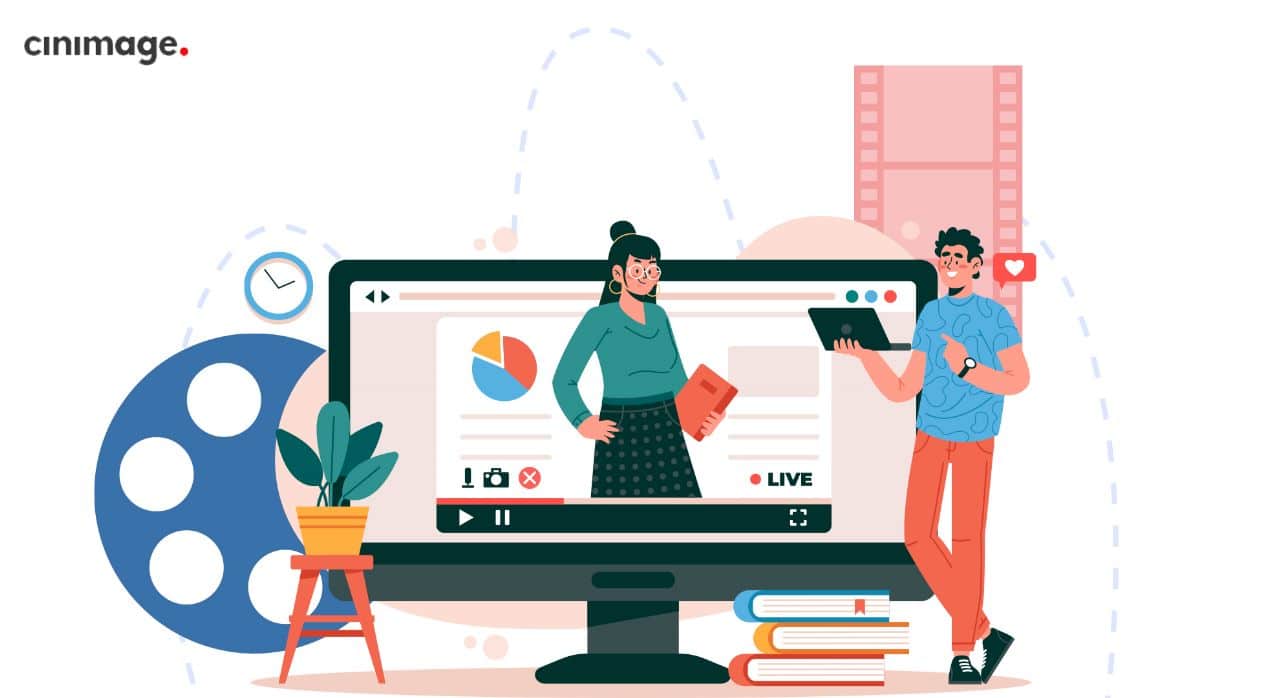How to Make Explainer Videos?
Explainer videos are a boon for businesses for their ability to distill down complex concepts using animations or live action. A well-made explainer video can do wonders for your brand, product, service, et al. They are also fantastic tools for explaining processes to employees and stakeholders.
The pithy yet powerful nature of explainer videos makes them the perfect candidate for organizations across sectors. Whether it’s a corporate house or an educational institution, anyone can use an explainer video to clearly communicate to their audience, leading to improved branding, better awareness, and bigger sales. But how do you make an explainer video that accomplishes all these awesome feats?
Read on as we dive into the step-by-step process of making an animated explainer video.
Making an Explainer Video in 11 Steps
An explainer video can look deceptively effortless. With a keen eye for technicalities, you can find the many layers of work that go into making an explainer video. Let’s break down the process.
Step 1: Identify your Goal
Before you set out to make an explainer video, you need to outline the goals of your project. What is the explainer video about? How will it influence your audience? What is your expected result from the video? Are you looking for people to buy your product, subscribe to a service, or download an app? Do you want to generate more followers or leads? Note down the answers to all these and more. You will find that they help you throughout your explainer video production journey.
Step 2: Pick Your Video Style
Explainer videos are a broad category. There are different styles you can pick from. Once you decide on a video style, it can help you guide the script you want to write.
There are three common styles you can pick from. It can be a whiteboard animation, animation, or a live-action video. A whiteboard animation explainer uses simpler designs and graphics on a whiteboard background. A traditional animation video can be a 2D, 3D, or motion graphics video that heavily relies on visuals to explain. A live-action explainer video is where you film someone explaining a thing for real.
Once you know what kind of animation video you need, you can use this style as a reference while writing your script.
Step 3: Define the target audience
Before you set out to make the video, identify who your target audience is. Who are you speaking to? How can you tweak your message or style to fit the needs of the target audience? Are you speaking to a particular age group? Are you talking to new or old customers? Is the audience knowledgeable enough to understand the jargon, or should you use layman’s language? What is the size of your target audience?
All of these questions can help shape the video you are making.
Step 4:Have a clear CTA
How do you ensure your viewers follow through after watching your video? This can be done by adding a clear call to action. You cannot expect a viewer to be self-motivated to buy your product or subscribe to your newsletter. Saying it in words in your video is crucial. You must give them a clear call to action to ensure they follow through.
Step 5: Write the script
Unlike other video formats, an explainer video anchors itself on the voice-over that does the explaining. Once you know what you are saying, you will know what you want to show. So the script leans heavily on the explanation. The script can also help you regulate the length of the video.
When writing scripts for videos, you should be as clear and precise as possible. The goal of the video should be obvious. It should answer questions like who this service/product is for, what it does, what it does, how it solves it, and how a user should use it, etc.
Step 7: Record the Voice-over
Once you are done with the script, you can start recording the audio. Find the voice that best suits your purpose. It should be someone who will have clear pronunciation and articulation, the right voice modulation, and an attitude that matches your product.
You will need either a professional studio or a tranquil space with a high-quality microphone to record the voice. Once the audio recording is done, you can edit it to give the causes and effects. This is where you edit out the mistakes and stitch together all the lines. Advanced software allows you to edit out additional noises like background noise, breaths, and clicks while talking. Different software exists for professional audio editing, like Adobe Audition, Audacity, etc.
Step 8: Create or record the visuals
If you are planning on an animated video, this is where you get down to collecting visuals, designing new ones, and using animation software to create the visuals that you need. Stitch together all the visuals to make a cohesive and comprehensive video that aligns with your recorded audio.
If you are making live-action videos, you can record your visuals and audio at the same time. This requires minimal effects. However, if you add animation bits in between, you need to animate them and use them strategically to serve your purpose.
Step 9: Post-Production – Editing
Now that you have finished recording the audio and the video, you need to edit them to create a final product. In this post-production phase, you use editing software to organize and stitch the audio and visuals together. You can use visual and sound effects to make the video interesting. You can add transitions and breaks to make your video more understandable. This is where you can add subtitles to your video.
Step 10: Add music to the video
It’s almost magical how the right music can elevate your video. Without music, your video is just another boring explanation. But with the right music that matches your themes, you can create a world of difference. It gives an emotional setting to your video and makes it more interesting.
Step 11: Track KPIs
Once all the editing is done, and your final product has aired on all the relevant platforms, you can track how it performs. There are different ways you can do this. Once you know how well your video is performing, you can determine whether or not it is a success.
The metrics you are looking at should sync with the objectives you mentioned in the goals. Are viewers following up with the CTA? Is there an increase in traffic to your website, or are more leads being generated?
Wrapping Up
An explainer video is a great way to connect with your audience. You are making yourself more clear and transparent with it. Becoming familiar makes you a better option for the customer at the time of purchase. Explainer videos are a good investment if you are introducing a new product or service in the market.
You can either create a video on your own or hire a professional video production company to do it for you. If you hire a professional team like Cinimage, you will benefit from our many years of expertise. We work with you through every step to understand your needs and translate them into a good explainer video. Reach out to us to get started!
Frequently Asked Questions
- Which software is used for explainer videos?
There are many software with many features to make a stunning explainer video.
Some of them are VideoScribe, Biteable, RawShorts, Visme etc.
- How long does it take to make a 1-minute explainer video?
Making a one-minute-long explainer video can take up days or even weeks. It depends on the complexity of the visuals and the audio.
- Do explainer videos have to be animated?
Explainer videos can also be live-action, where a real person explains the concept on video.
- Are explainer videos still popular?
Explainer videos are a hugely popular form. They are used in all industries, from corporate offices to cooking.
- How long should an explainer video last?
An explainer video should ideally be less than 3 minutes. This is the ideal time to keep the viewer interested.

